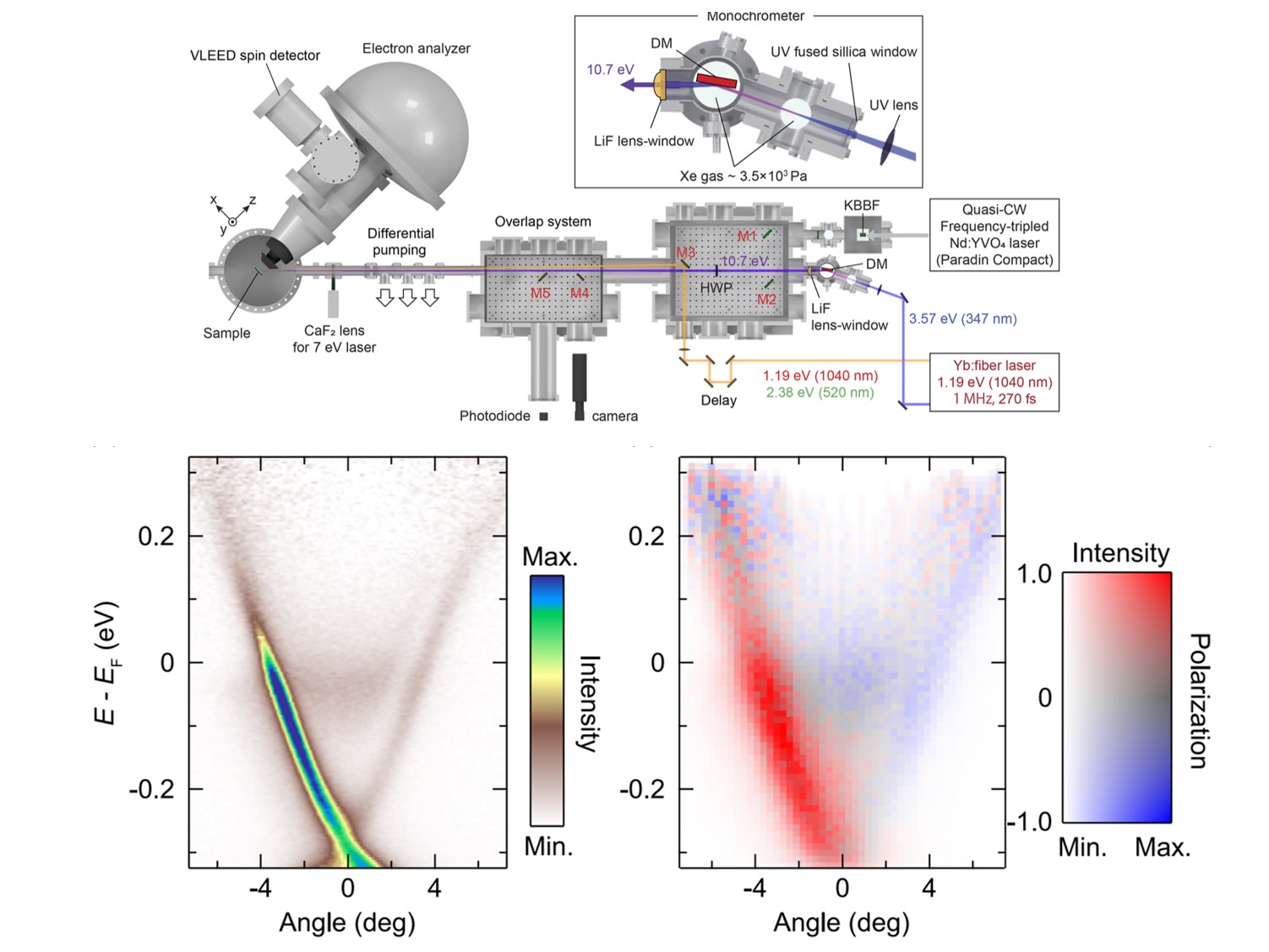Key points of this research results
- A technique to capture electron spins at a frame rate of one trillionth of a second is developed.
- A ultrafast generation of a spin current induced by light in a topological insulator is successfully captured.
- A new principle of optical spintronics technology utilizing optical spin control is experimentally demonstrated.
Outline
Thanks to the "atto-second (one hundred quintillionth) light pulses" that earned the 2023 Nobel Prize in Physics, recently the ultrafast motion of electrons in solids have been visualized in experiments. Yet, it has been extremely challenging to experimentally detect the spin of electrons, preventing a clear understanding of the ultrafast motion of electron spins, such as the spin current used in next-generation spintronics technology. In this research, we successfully developed a new device by combining spin angle-resolved photoelectron spectroscopy (SARPES), which allows for the direct observation of electron spins, and femtosecond (one quadrillionth of a second) light pulse technology. Applying this apparatus for studying topological insulators, we successfully observed the moment when a spin current is generated by a light pulse. This achievement was led by Associate Professor Takeshi Kondo of the University of Tokyo and Associate Professor Kenta Kuroda of Hiroshima University, and the results were published in a paper (Kawaguchi et al., 2023, Review of Scientific Instruments 94, 083902).
This device, capable of capturing the rapidly changing motion of electrons and their spin degree of freedom under light irradiation, can be applied to technologies such as optical spin control, incorporating information from light into electron spins, in devices like optical spintronics devices and solar cells.


 Home
Home



